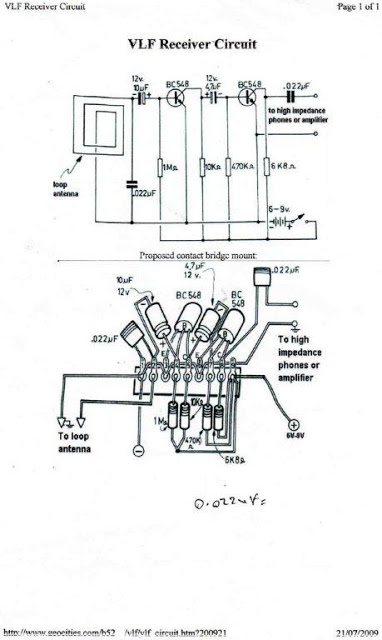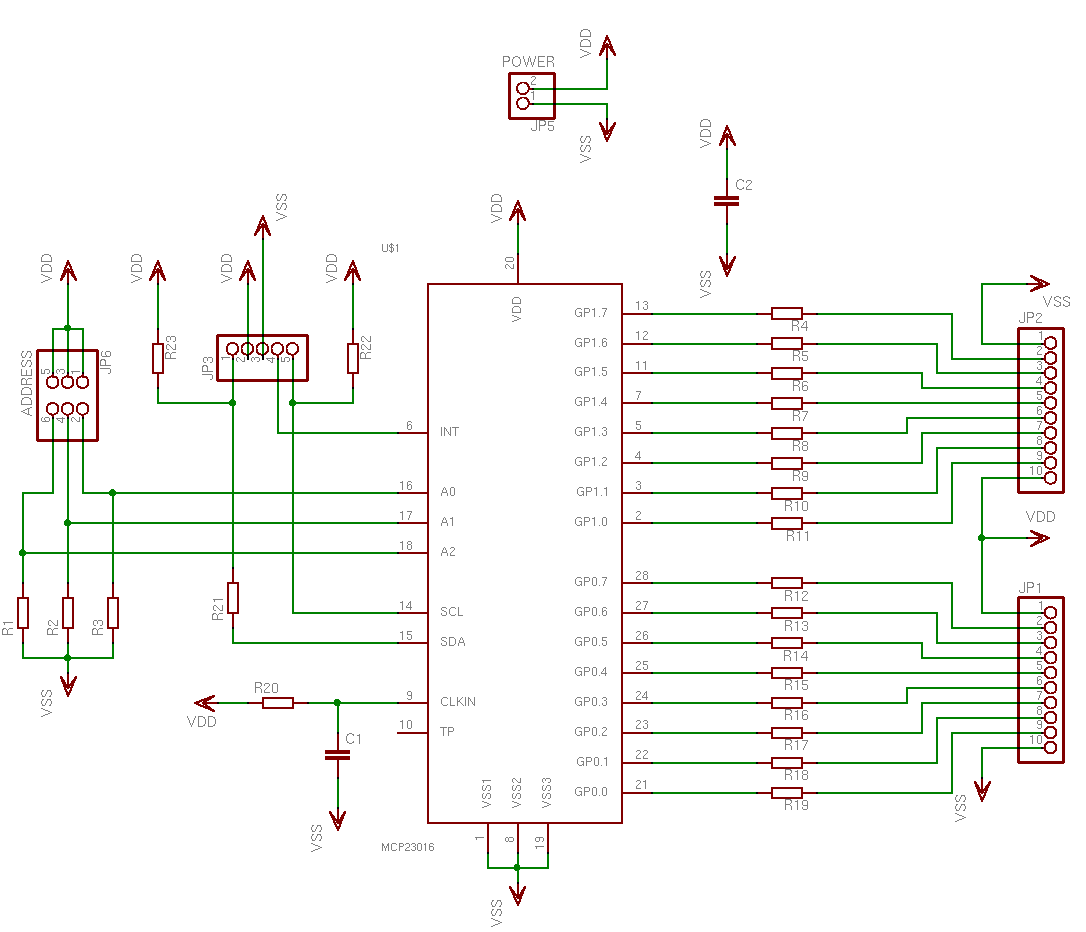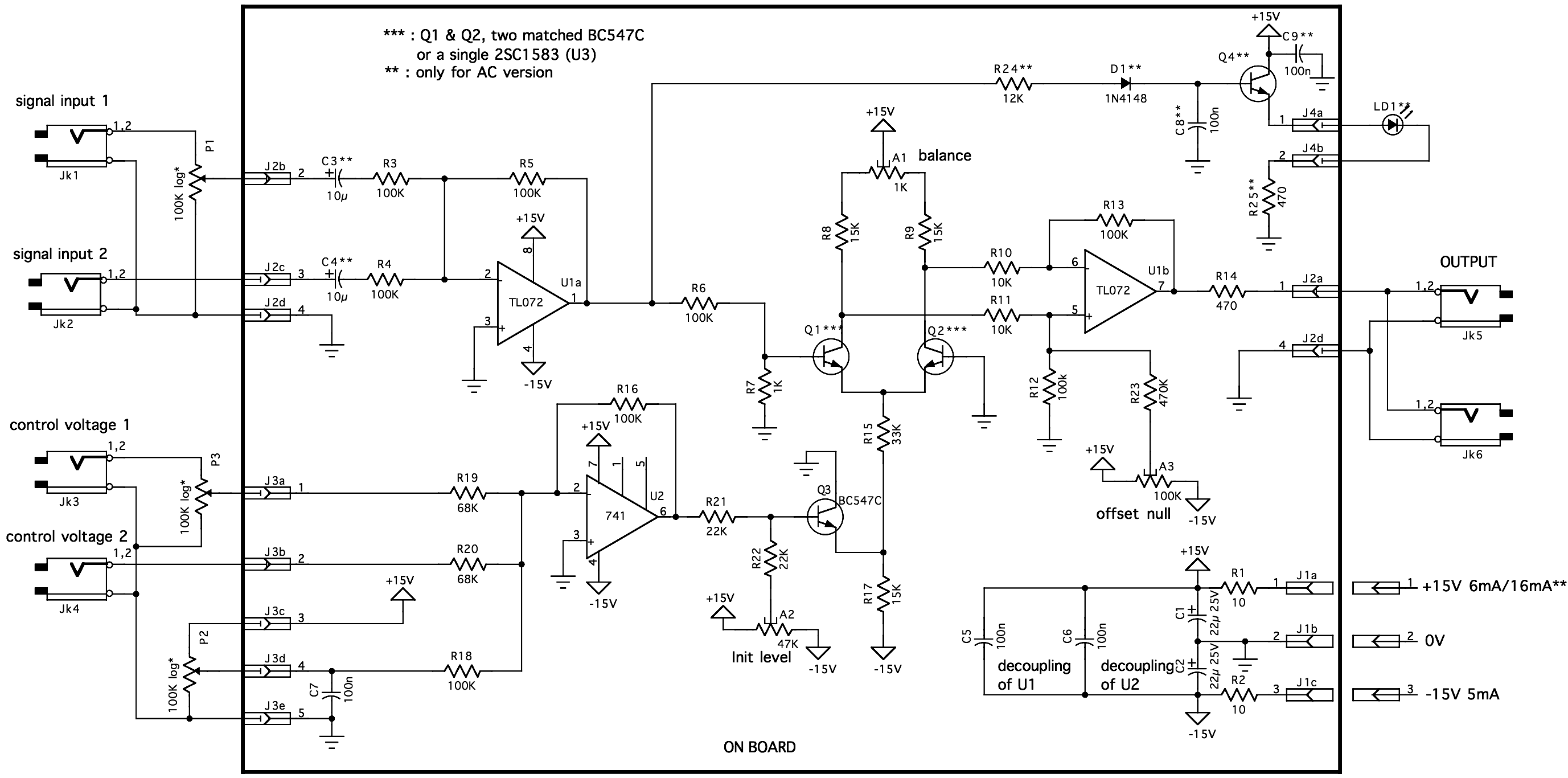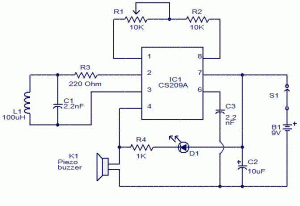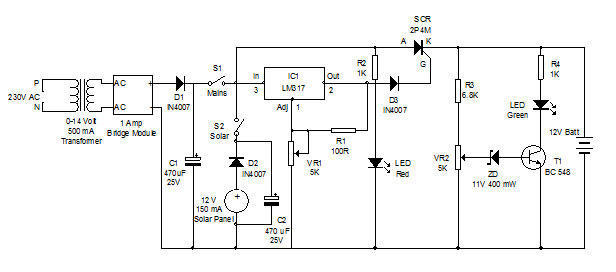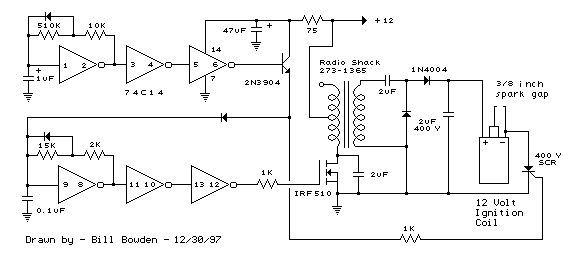
4093 Cmos Astable Oscillator Circuit
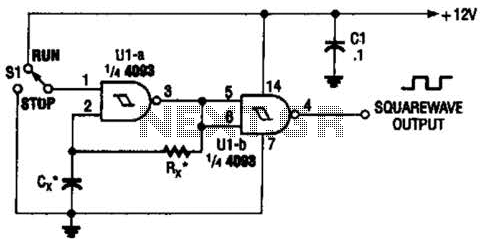
Two gates of the Quad 4093 are utilized to create an oscillator. The resistor (R) can range from approximately 5 kΩ to around 10 kΩ. The capacitor (Cx) can vary from about 10 pF to higher values, with the upper limit determined by the leakage characteristics of the capacitor. The frequency of oscillation is approximately 2.8/(RxCx), where R is in megohms and C is in microfarads.
The circuit utilizes two NAND gates from the Quad 4093 integrated circuit, which contains four Schmitt-trigger NAND gates. The configuration for the oscillator typically involves connecting one gate in a feedback loop with the other gate. This arrangement allows for the generation of a square wave output.
The resistor R and capacitor Cx define the time constant of the oscillator circuit, influencing the frequency of oscillation. The frequency can be calculated using the formula provided, where R is expressed in megohms and C in microfarads. The choice of resistor and capacitor values will affect the stability and frequency of the output waveform.
In practical applications, the resistor should be chosen within the specified range to ensure reliable oscillation. The capacitor's leakage current must be taken into account, as it can significantly affect the performance of the oscillator, particularly at higher capacitance values. This circuit can be used in various applications, such as clock generation, signal modulation, and waveform generation, making it a versatile choice for electronic designs.
For optimal performance, it is advisable to use components with low tolerance and temperature coefficients, ensuring that the oscillator maintains a stable frequency across varying environmental conditions. Additionally, proper decoupling of the power supply to the Quad 4093 is essential to minimize noise and improve the stability of the oscillator circuit. Two gates of the Quad 4093 are used to make an oscillator. R,t: can be from about 5 kft to around 10 . Cx can be from about 10 pF to many, the limit being set by the leakage of the capacitor. Frequency is approximately 2.8/RxCx (R Mohm, Cmfd). 🔗 External reference
The circuit utilizes two NAND gates from the Quad 4093 integrated circuit, which contains four Schmitt-trigger NAND gates. The configuration for the oscillator typically involves connecting one gate in a feedback loop with the other gate. This arrangement allows for the generation of a square wave output.
The resistor R and capacitor Cx define the time constant of the oscillator circuit, influencing the frequency of oscillation. The frequency can be calculated using the formula provided, where R is expressed in megohms and C in microfarads. The choice of resistor and capacitor values will affect the stability and frequency of the output waveform.
In practical applications, the resistor should be chosen within the specified range to ensure reliable oscillation. The capacitor's leakage current must be taken into account, as it can significantly affect the performance of the oscillator, particularly at higher capacitance values. This circuit can be used in various applications, such as clock generation, signal modulation, and waveform generation, making it a versatile choice for electronic designs.
For optimal performance, it is advisable to use components with low tolerance and temperature coefficients, ensuring that the oscillator maintains a stable frequency across varying environmental conditions. Additionally, proper decoupling of the power supply to the Quad 4093 is essential to minimize noise and improve the stability of the oscillator circuit. Two gates of the Quad 4093 are used to make an oscillator. R,t: can be from about 5 kft to around 10 . Cx can be from about 10 pF to many, the limit being set by the leakage of the capacitor. Frequency is approximately 2.8/RxCx (R Mohm, Cmfd). 🔗 External reference
Warning: include(partials/cookie-banner.php): Failed to open stream: Permission denied in /var/www/html/nextgr/view-circuit.php on line 713
Warning: include(): Failed opening 'partials/cookie-banner.php' for inclusion (include_path='.:/usr/share/php') in /var/www/html/nextgr/view-circuit.php on line 713
